Somerset and Dorset Railway closure marked 50 years on
- Published
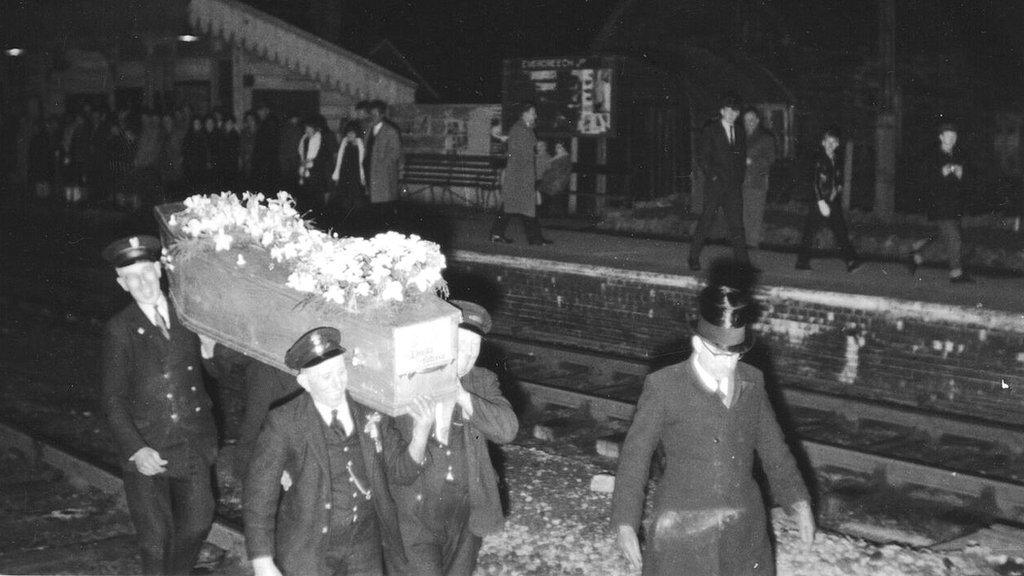
Emotions ran high as a coffin with the message 'S&D died today' was loaded on to S&D Railway's last service train in March 1966
The 50th anniversary of the closing of the Somerset and Dorset Railway is being marked over the weekend.
On 5 March 1966 a coffin with the words "S&D died today" was loaded on to the very last train in a mock funeral to mark the service's demise.
At its height, the line linked places like Bridgwater, Burnham-on-Sea, Wells, Bath and Glastonbury.
But Michael Eavis, Glastonbury founder, said it would be "impossible" to have a "train coming through the site now".
The S&D, as it was known, was created in 1862 when two railways - Somerset Central Railway and Dorset Central Railway - merged to create a coast-to-coast line from Burnham-on-Sea to Poole.

The S&D carried more goods than people, often transporting over 1,000 wagons a day from all over Britain
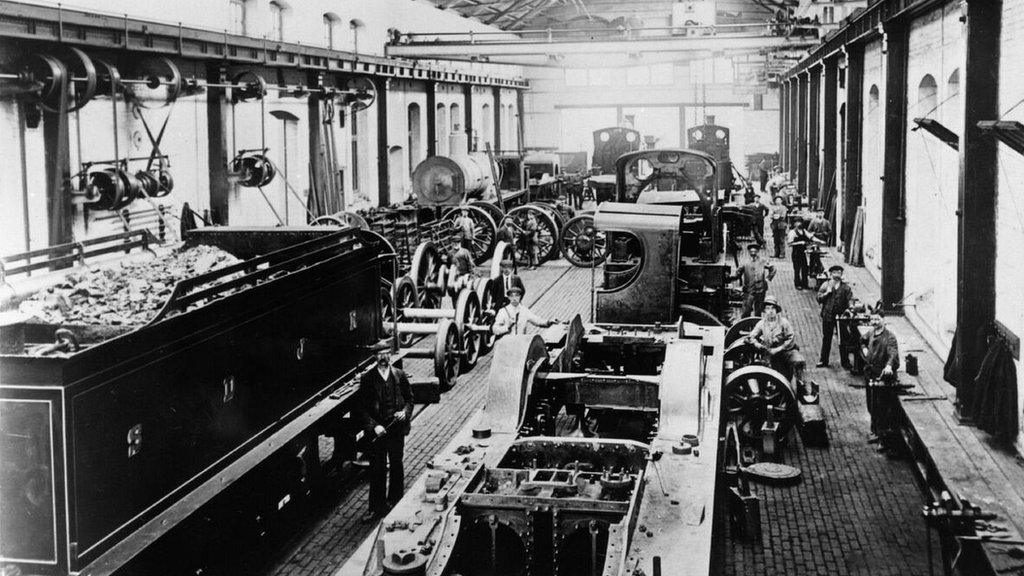
Hundreds of people were needed to run the railway, from the drivers and firemen on the engines, to the maintenance gangs beavering away in Highbridge Works or on trackside repairs

A huge variety of freight was carried including coal from the Radstock mines, stone from the Mendip Hills and peat from the Somerset Levels
Twelve years later, a spectacular extension across the Mendip Hills to Bath was opened carrying coal from the Radstock mines and stone from the Mendip Hills.
It also exploited the Midland Railway link, which by the 1950s saw the service stretched to its limits ferrying holiday-makers from northern England and the Midlands to the south coast.
But it was a difficult and expensive line to run. Two engines were needed to haul trains over the steep Mendips, stretches of single-track caused bottlenecks and the curving line limited train speeds.
And as more people began to own cars and there was less demand for coal, the S&D was reduced to a rural branch line and finally closed down on 7 March 1966.
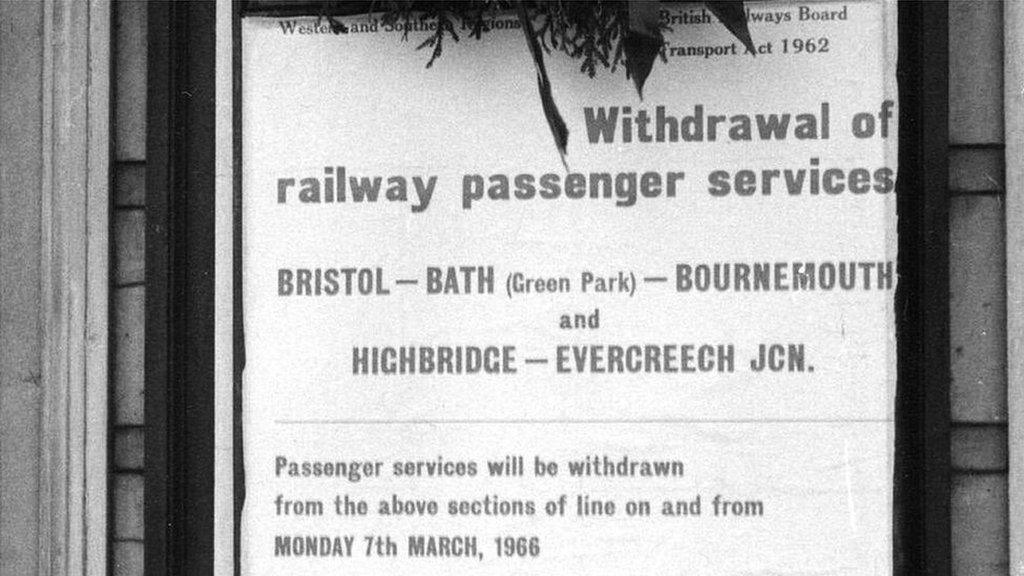
Begun as an ambitious coast-to-coast line, the S&D struggled financially due to its challenging rural route and seasonal variations in passengers and freight
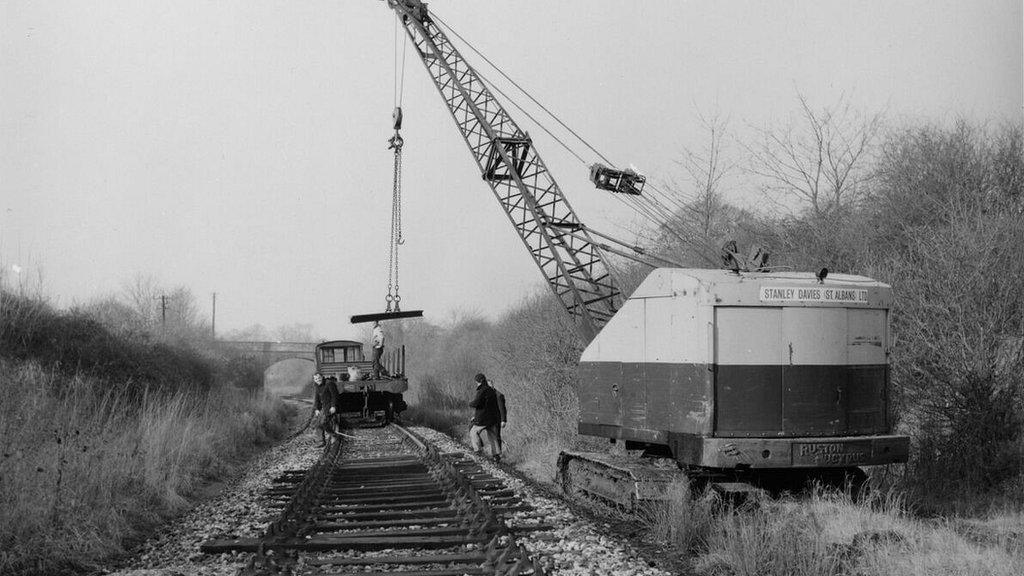
When the line closed in 1966 a few sections were kept for local freight, coal and milk trains but by the mid-1970s all the track had been removed
But evidence of the line still exists. According to Mr Eavis, it originally crossed what is now Glastonbury's Main Avenue, and West Holts stage was named for a nearby railway crossing.
"There was a gate for cattle to cross and I used to bring them up and across the railway line for milking - so that's where the West Holts name comes from," he said.
"But Main Avenue is the main artery through the site so we'd be stuffed if trains were still here and we couldn't use it."

At its height, the line linked places like Bridgwater, Burnham-on-Sea, Wells, Bath and Glastonbury (pictured above)
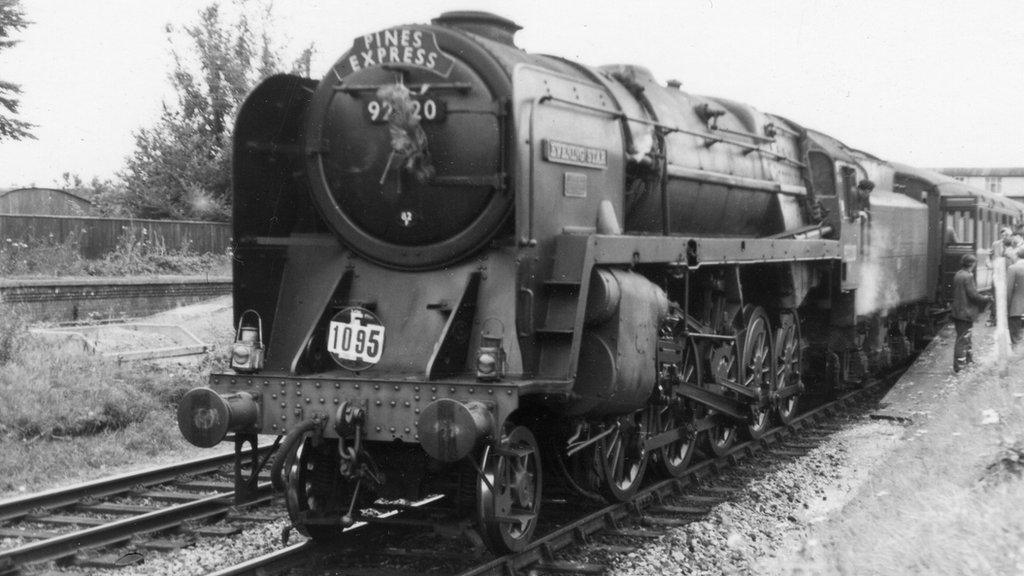
In 1910, a daily through train linking Liverpool, Manchester and Bournemouth began running and in 1927 was named the Pines Express
- Published17 July 2010